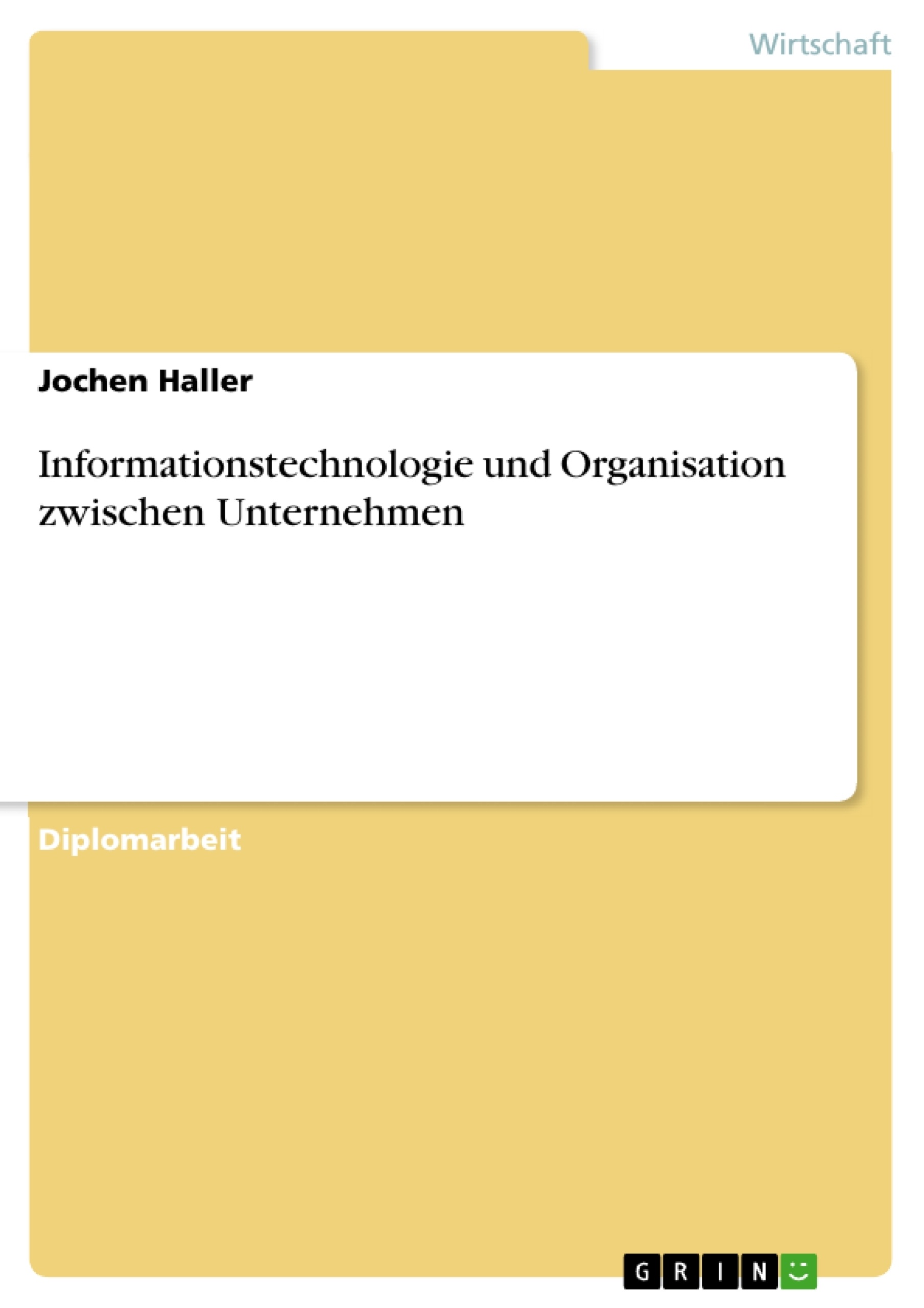Die vorliegende Arbeit untersucht die Frage, ob ein theoretischer Zusammenhang zwischen dem Einsatz von IT und der zwischenbetrieblichen Organisation hergestellt werden kann und inwiefern sich der Einsatz von IT auf die zwischenbetriebliche Organisation auswirkt.
Ausgangspunkt dieser Arbeit stellt Kapitel 2 dar, indem auf die verschieden ökonomischen Erklärungsansätze der Theorie der Unternehmung eingegangen wird. Zudem wird versucht diese danach zu beurteilen, inwiefern sie geeignet sind, die Frage nach den Grenzen der Unternehmung zu beantworten. Nach einer kurzen Betrachtung der unterschiedlichen Koordinationsstrukturen betrieblicher bzw. zwischenbetrieblicher Koordination und deren Vor- und Nachteile in Kapitel 3, wird in Kapitel 4 auf die ökonomischen Auswirkungen der IT, insbes. des Internets, auf die zwischenbetriebliche Organisation eingegangen. Abschließend wird in Kapitel 5 ein einfaches mathematisches Modell betrachtet, welches den Aspekt der Auswirkung von IT auf die zwischenbetriebliche Kooperation am Beispiel eines alternativen elektronischen Marktes veranschaulicht.
Inhaltsverzeichnis
- Einleitung
- Problemstellung
- Aufbau der Arbeit
- Theoretische Grundlagen
- (Neo-)klassische Theorie der Unternehmung
- Prinzipal-Agent-Ansatz
- Transaktionskostenansatz
- 'property rights'-Ansatz und Theorie unvollständiger Verträge
- Alternative Koordinationsstrukturen
- Spot-Markt
- Strategisches Netzwerk
- Keiretsu
- Joint Venture
- Integration und Hierarchie
- Ökonomische Konsequenzen der Informationstechnologie
- Entwicklung des Internets
- Elektronischer Markt
- Auswirkung auf die zwischenbetriebliche Organisation
- 'move to the market'-Hypothese
- 'move to the middle'-Hypothese
- 'mixed mode'-Hypothese
- Ein einfaches mathematisches Modell
- Technologische Annahmen
- Wirkung beziehungsspezifischer Investitionen
- Wiederholte Beziehung
- Auswirkung transaktionskostensenkender Technologien
- Mögliche Erweiterungen
- Zusammenfassung und Ausblick
- Zusammenfassung
- Ausblick
Zielsetzung und Themenschwerpunkte
Die Diplomarbeit beschäftigt sich mit der Frage, wie Informationstechnologie die Organisation von Unternehmen beeinflusst. Ziel ist es, die Auswirkungen der Informationstechnologie auf die zwischenbetriebliche Organisation zu untersuchen und die Auswirkungen auf die Koordinationsstrukturen zwischen Unternehmen zu analysieren.
- Die Rolle der Informationstechnologie in der Organisationsgestaltung
- Die Auswirkungen der Informationstechnologie auf die Transaktionskosten
- Die verschiedenen Koordinationsstrukturen und ihre Anpassung an die Informationstechnologie
- Die Analyse von 'move to the market', 'move to the middle' und 'mixed mode'-Hypothesen
- Die Entwicklung eines einfachen mathematischen Modells zur Veranschaulichung der Zusammenhänge
Zusammenfassung der Kapitel
Die Einleitung stellt die Problemstellung der Arbeit dar und beschreibt den Aufbau. Kapitel 2 behandelt die theoretischen Grundlagen, indem es die (Neo-)klassische Theorie der Unternehmung, den Prinzipal-Agent-Ansatz, den Transaktionskostenansatz und den 'property rights'-Ansatz erläutert. Kapitel 3 befasst sich mit alternativen Koordinationsstrukturen wie dem Spot-Markt, strategischen Netzwerken, Keiretsu, Joint Ventures und der Integration/Hierarchie. In Kapitel 4 werden die ökonomischen Konsequenzen der Informationstechnologie, insbesondere die Entwicklung des Internets und die Entstehung des elektronischen Marktes, betrachtet. Die Auswirkungen auf die zwischenbetriebliche Organisation werden anhand der 'move to the market', 'move to the middle' und 'mixed mode'-Hypothesen analysiert. Kapitel 5 präsentiert ein einfaches mathematisches Modell, das die Wirkung transaktionskostensenkender Technologien auf die Koordinationsstrukturen untersucht.
Schlüsselwörter
Informationstechnologie, Organisation, Unternehmen, Transaktionskosten, Koordinationsstrukturen, 'move to the market'-Hypothese, 'move to the middle'-Hypothese, 'mixed mode'-Hypothese, mathematisches Modell, zwischenbetriebliche Organisation, Strategische Netzwerke, Keiretsu, Joint Ventures, Integration, Hierarchie.
- Quote paper
- Dr. Jochen Haller (Author), 2001, Informationstechnologie und Organisation zwischen Unternehmen, Munich, GRIN Verlag, https://www.grin.com/document/1445




